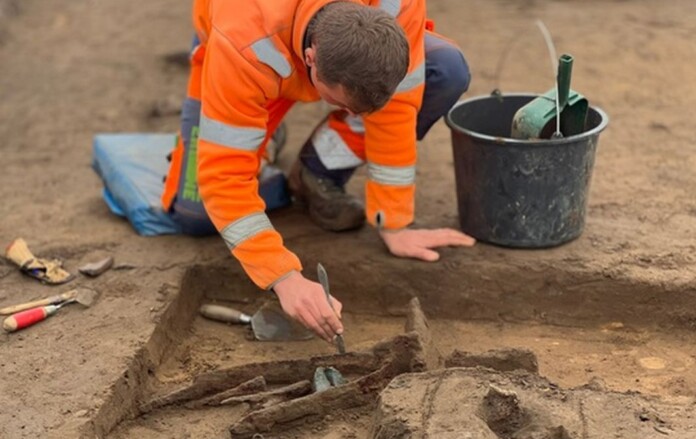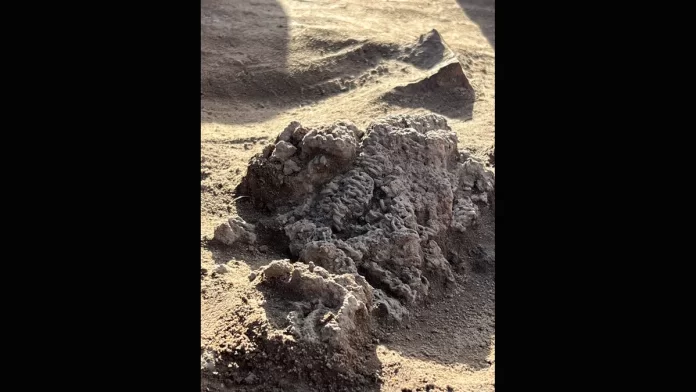Archaeologists Discover Huge Iron Age ‘Weapon Sacrifice’ – A Curious Custom Predating Vikings
 |
| Excavation leader Elias Witte Thomasen uncovering the massive weapon sacrifice – Credit: Vejle Museums |
During work on the E45 motorway in Denmark, archaeologists uncovered a large ‘weapon sacrifice’ consisting of hundreds of bladed weapons from the late Iron Age.
Alongside the iron armaments, an incredibly valuable chainmail cuirass and other artifacts were also interred, indicating that the site was once inhabited by a prominent leader, goodnewsnetwork.org.
The manner in which the war equipment was buried suggests it was an offering to higher powers, a strange yet well-documented custom that’s believed to have taken place after battles or the death of an important individual.
“From the very first surveys, we knew this was going to be extraordinary, but the excavation has exceeded all our expectations,” said Elias Witte Thomasen, an archaeologist at the Vejle Museums and leader of the excavation, in a museum press release.
“The sheer number of weapons is astonishing, but what fascinates me most is the glimpse they provide into the societal structure and daily life of the Iron Age. We suddenly feel very close to the people who lived here 1,500 years ago.”
The haul includes 119 lance and spearheads, 8 swords, 5 knives, 3 arrowheads, an axe head, and a chainmail cuirass—an object of immense value at the time, which would have taken months to craft. Also found were two ‘oath rings,’ a bugle of sorts, and a horse bridle, alongside other unidentified iron objects and hundreds of flint and pottery fragments.
The rings, worn around the neck, bore the depictions of a ‘ring bearer,’ an artistic motif borrowed from the Romans meant to denote power and loyalty, and who in this case seems to be wearing chainmail similar to the kind found there.
The weapons were found in the remains of two separate buildings in Løsning Søndermark, in the municipality of Hedensted, and were often bent in dramatic angles.
 |
| The chainmail shirt -Credit: Vejlemuseere. |
In one, the deposits were made during the dismantling of the house. The large, roof-bearing posts were removed, and the weapons were buried in the empty hole. In the second, the offerings were made during the construction of the house, with the weapons and other equipment being tightly packed around the roof-bearing posts prior to backfilling.
This gave the archaeologists the assurance that the building wasn’t a barracks or smithy, where one may expect to find piles of weapons, and that they were all set together for ceremonial purposes.
“Considering how expensive and time-consuming forging weapons was back then, this is like sacrificing a bunch of sedans,” one reader commented on Gizmodo’s report of the museum’s discovery.
The ceramics and flints indicate how the settlement at Hedensted had long been inhabited, and that by the time of the burial—perhaps 400 CE—it had grown into a significant center of community which may have attracted the kind of individual who could afford a chainmail shirt.
Producing chainmail required significant expertise, and would remain part of the battle regalia of Scandinavia’s warrior elite for the next 600 years at least.
Very few chainmails from the Iron Age have been found in southern Scandinavia. The chainmail from Hedensted is the first discovered in relation to a settlement rather than in burials.
Efforts are underway to display parts of the massive find at the Vejle Cultural Museum in early 2025.






Коментарі
Дописати коментар